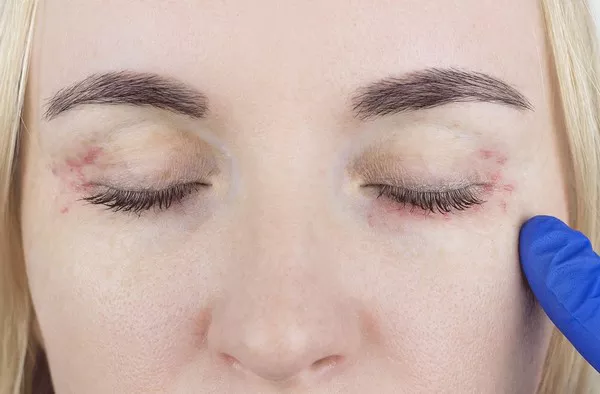In a move that has triggered widespread chaos, the U.S. Department of Health and Human Services (HHS) has enacted sweeping staff reductions across multiple health agencies, including the National Institutes of Health (NIH), the Food and Drug Administration (FDA), and the Centers for Disease Control and Prevention (CDC). The abrupt actions, which began on the eve of April Fools’ Day, have left thousands of employees in turmoil, raising concerns about the future of critical health research and public health programs.
Leaders Displaced as NIH and Other Agencies Face Unprecedented Cuts
On April 1, emails informing senior leaders at NIH’s 27 institutes and centers arrived, notifying them that they would be placed on leave and offered reassignment to the Indian Health Service (IHS) in remote locations such as Alaska and Oklahoma. Among those impacted were four directors and one acting director. Similar emails were sent to key personnel at the FDA and CDC, leaving staff with less than two days to choose their new assignments.
The reductions were part of an effort led by the White House’s Department of Government Efficiency (DOGE) aimed at streamlining operations and cutting costs. Within hours, an estimated 10,000 employees at HHS had received notices about their termination. Many were shocked to find their security badges deactivated upon arriving at work, signaling their immediate dismissal.
The scale of the cuts, however, went far beyond administrative functions. In a stunning turn of events, the NIH, typically immune from such drastic actions, was also affected. While initial reports suggested the cuts would mainly target administrative roles, researchers—including prominent figures like Dr. Richard Youle, a Parkinson’s disease expert who received the prestigious Breakthrough Prize for Life Sciences—were among those targeted.
Controversial Reversals and Confusion Surround the RIF
The aftermath of the reductions has been marked by confusion and controversy. HHS officials later acknowledged that some terminations may have been the result of “coding errors.” A public uproar over the firing of 11 senior researchers at NIH’s National Institute of Neurological Disorders and Stroke (NINDS) led to a rare reversal, with officials urging those affected to unofficially return to their positions.
HHS Secretary Robert F. Kennedy Jr. admitted that some cuts were likely mistakes, stating that about 20% of the layoffs would be reversed. He also suggested that specific programs, including the lead poisoning initiative, could be reinstated. Despite these assurances, the firings of several senior NIH leaders, including those at the National Institute of Allergy and Infectious Diseases (NIAID), sparked outrage from scientists and former agency heads.
Outcry from Health Experts and Politicians
The cuts have drawn harsh criticism from research advocates, public health experts, and political figures. Harold Varmus, former NIH Director, called the actions “outrageous,” questioning the justification for removing experienced leaders without evidence of incompetence. Similarly, former NIH director Monica Bertagnolli expressed concern that valuable research programs led by these individuals would be severely harmed.
Public health organizations, including the Association of American Medical Colleges, warned that the cuts would slow scientific advancement and jeopardize public health. The reductions have particularly hit NIAID hard, which had already been under fire due to its role in managing the COVID-19 pandemic. Among those displaced were NIAID Director Jeanne Marrazzo and senior officials closely associated with Dr. Anthony Fauci’s leadership during the pandemic.
Mass Layoffs and Disruptions Across Agencies
The impact of the cuts extended far beyond leadership positions. NIH, FDA, and CDC faced widespread layoffs, with over 6% of NIH’s workforce—approximately 1,300 employees—dismissed. At the FDA, 3,500 employees lost their jobs, and 2,400 were let go at the CDC. These layoffs come on top of earlier staff reductions earlier this year, which had already seen 10,000 employees leave through retirements, buyouts, and dismissals.
One NIH senior scientist described the scene as “absolute chaos,” noting that entire procurement offices were eliminated and laboratory orders were halted. Some institutes lost nearly all of their communications staff, creating a breakdown in internal and external communications.
The CDC was also severely impacted, with significant cuts to its injury prevention programs and HIV prevention efforts. John Brooks, a former chief medical officer at the CDC, warned that these changes could undo years of progress in reducing HIV transmission, leading to greater costs and risks to public health.
The Future of U.S. Health Agencies in Jeopardy
The staffing upheavals come at a time of broader disruption within the U.S. biomedical research community. Funding cuts to NIH grants have already caused concern, particularly in areas related to diversity and gender research. Further staff reductions are expected, including a 35% cut to contracted funding across all HHS agencies, which could jeopardize ongoing research projects and clinical trials.
With new leadership at both NIH and FDA, questions remain about how these changes will affect the agencies’ future. Jayanta “Jay” Bhattacharya, the newly appointed NIH director, has pledged to lead the agency through these reforms, but his ability to advocate for NIH’s interests in the face of such sweeping changes remains uncertain.
As the dust settles, scientists and staff at the NIH, FDA, and CDC are left grappling with the consequences of these unprecedented cuts, questioning whether the health of the American people will be compromised in the pursuit of greater efficiency.
Related topics

























